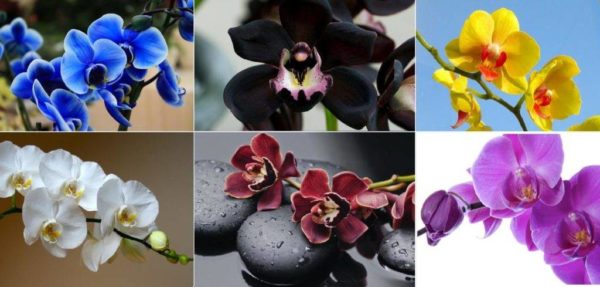
Previously, orchids usually lived in greenhouses or greenhouses, however, recently they have become exclusively houseplants and have taken root perfectly at home. To date, there are a lot of varieties of orchids, so everyone can choose the variety that he will like.
There are various types of orchids, and in addition to the original varieties, there are also hybrids, many of which take root in indoor conditions even better than other types. Currently, this flower has become quite accessible, so you can find it in any specialized stores or in flower markets (see the photo of the plant below). Proper care must be taken at home.
Content
Description and description of orchids
Orchid is one of the most common flower species. Perennials are often found in nature, however, the shape of shrubs and lignified vines, which can be found in much smaller quantities, is not excluded. Orchid heights may vary significantly depending on the variety. The maximum height is 35 cm.
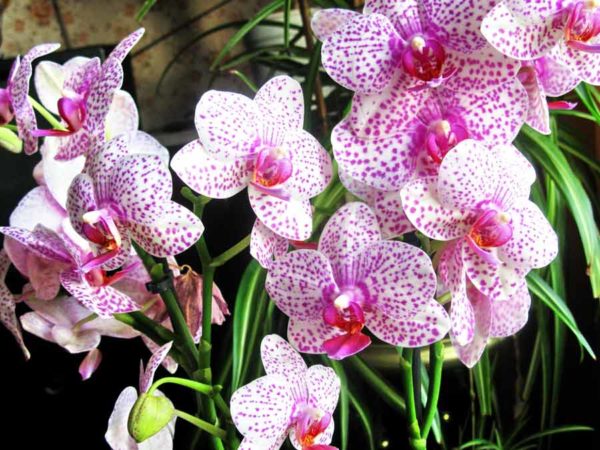
Types of Orchid Flowers
Flowers such as orchids usually have a certain classification associated with the root system of these plants. Different types of orchids have different characteristics associated with this factor.
- Epiphytic
This species usually grows at a certain height, using either trees or shrubs as a support. Nutrients enter this plant species usually through the air or from a certain amount of soil that accumulates in the recesses in the trees or in their hollows. They also use tree branches or shriveled parts of the bark.
In order to stay on a tree, epiphytic orchids are given very strong stems, which are usually green in color with a slight silver tint.
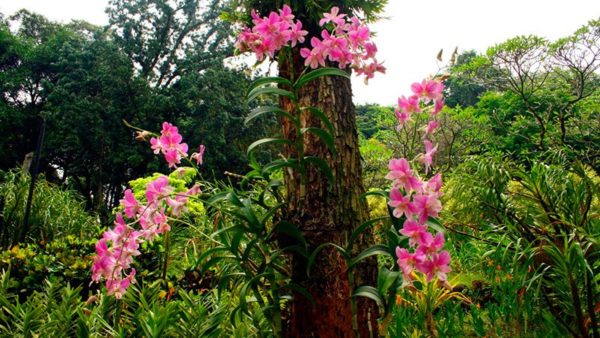
- Lithophytic
This type of orchid grows in more severe conditions, because it is forced to adapt to the conditions of hard rocks, limestone can often be found among the rocks.
This species is more moody than the previous one, since it needs more moisture. However, they are more stable, since they practically do not suffer if there was a sharp temperature drop during the day. High humidity also does not have a negative effect on them.
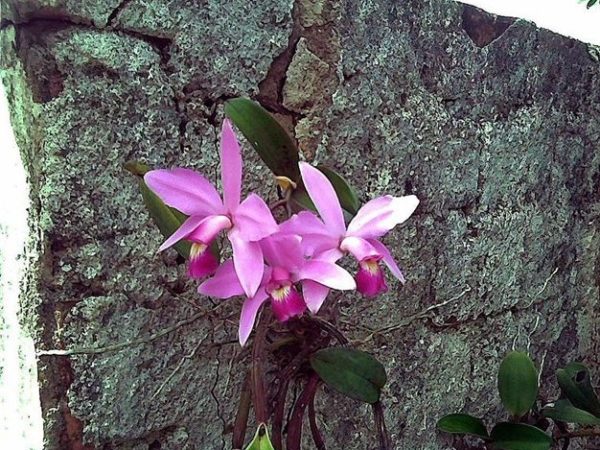
- Ground
The conditions for successful cultivation of this should be traditional, as for other standard indoor plants. It is best to plant orchids in the ground, their root system is represented by bulbs. Their height, as a rule, reaches no more than 50 cm. This species comes from tropical countries, where they grow more spreading, characterized by a large size of flowers and shrubs themselves.
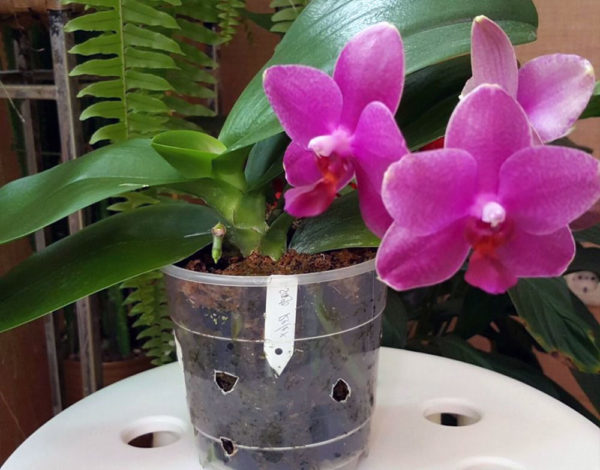
- Phalaenopsis
This type of orchid is currently considered the most common, this type is more than others can be seen on the shelves of flower shops, it is advised by sellers in markets that are personally engaged in their cultivation. The stems of this plant are significantly shortened, and the leaves have a skin retina. This species can bloom up to 5 months. Due to its visual similarity, this variety is also called the “moth” or “butterfly”.
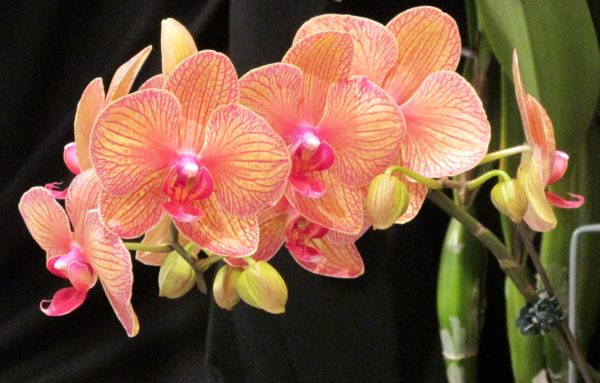
There are a lot of varieties of phalaenopsis today, they differ from each other in many ways:
- Schiller
This plant grows in the Philippines. He has very luxurious flowers, but no less beautiful leaves, they usually hang down and are up to a meter long. Peduncles scatter almost synchronously. The color spectrum starts from light pink and ends with purple or violet.
- Amabis
This variety has very thick leaves, whose length reaches half a meter. The diameter of the flowers can be up to a decimeter. If you create the necessary conditions for this variety, then the plant can bloom all year at home. The view is not whimsical and requires standard air humidity. On each peduncle, up to twenty flowers are usually formed, from each of which a well-perceptible aroma is heard.
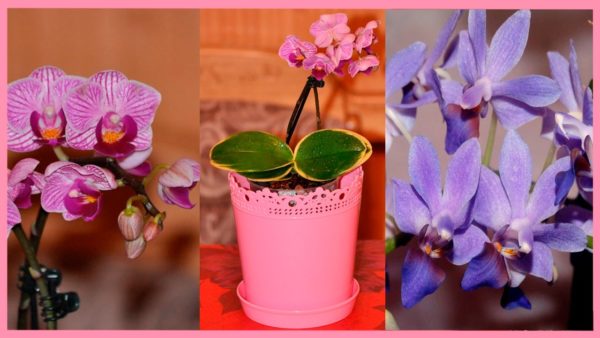
- Stuart
This species is unpretentious to the conditions of care. Its peduncles are branched in shape, on which rather large flowers are formed, from which a pleasant, unsharp aroma comes.
Petals are usually speckled white and the inside has a beautiful golden hue. Stewart can bloom for a whole year.
- Luddeman
This variety is quite thermophilic, and the flowers usually have a bright color. A feature of Luddemann is that his flowers bloom alternately and have a pleasant smell. Each peduncle is capable of producing up to seven flowers.
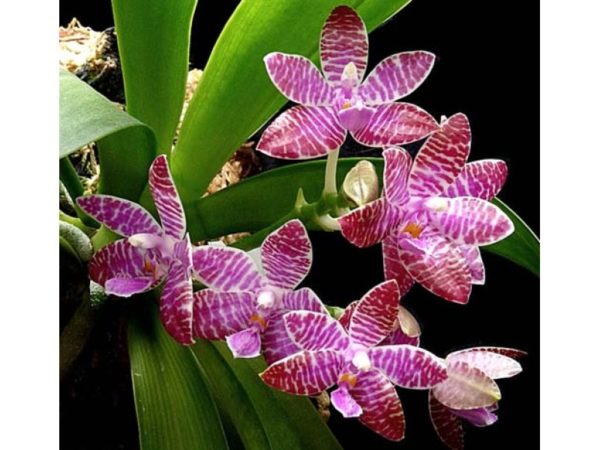
- Pink
This species is different in that it is miniature, however, its flowers are quite lush and elegant. One peduncle, as a rule, gives about 15 flowers. The lower part is reddish-green in color, and the upper part is pale pink.
- Sander
This flower belongs to a rather rare variety, and got its name from a very passionate lover of orchids. Color tones range from white to pale pink. Among orchids, this variety is considered one of the most expensive.
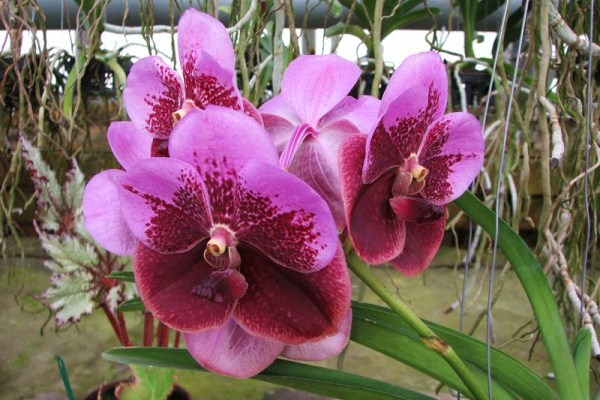
- Horse
A graceful flower with delicate purple flowers. If he creates the necessary conditions, then this variety will bloom year-round. The flowers of this species themselves are very small, not more than 3 cm in diameter, but they are densely concentrated on the peduncle.
- Giant
When this variety blooms, a light citrus aroma is felt in the air. It is so named because of its wide colors. As a rule, flowers are yellow, green with spots and dots.
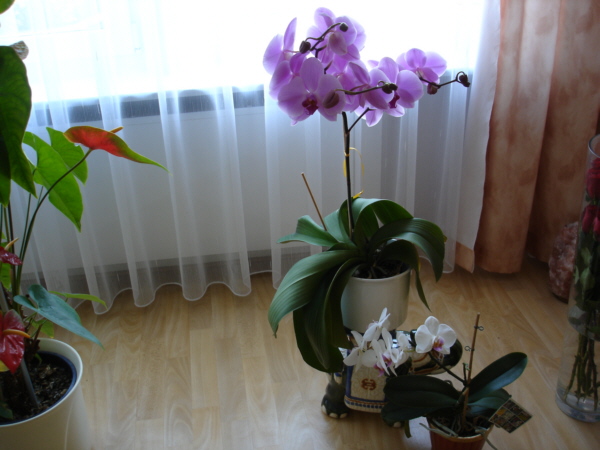
Varieties of Orchids
Orchids are very diverse plants and among them there are several interesting species:
- Calypso onion. It grows, as a rule, in cool areas with a temperate climate. It is under protection in Russia and will be listed in the Red Book. It is very difficult to meet him in nature.
- Wanda is blue. This is the only variety that has petals of a bluish tint. This variety is quite large and has powerful roots.
- Cymbidium Eburnum. This species is one of the most popular, flowers are usually white with yellowish spots. He needs more water and moderate temperature conditions.
- Odontoglossum heart-shaped.The flowers in this variety are yellow, and the lip has a contrasting purple hue. The plant is large enough, however, needs moderate watering.
- Habenaria radiata. The height of this species reaches 30 cm, and the color of the petals are usually white with a pearl shimmer. This variety is quite tender and needs a certain temperature regime; it has an absolute intolerance to drought.
- Oncidium is beautiful. Among the great diversity this species stands out. It is distinguished by its size, has strong peduncles with elegant yellow flowers. If the oncidium is young, then its leaves are a delicate green color, and over time, they become brownish or purple.
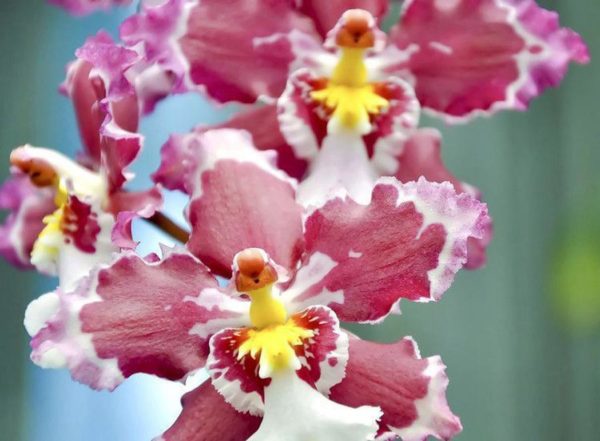
Indoor Orchid Varieties
Among indoor species, the following are especially distinguished:
- brassia - a flower with narrowed lemon-colored petals with brown dots;
- cambia - a flower with a pinkish or purple cup;
- Cattleya - a magnificent flower of white, purple or greenish flowers;
- likasta - flower petals can be orange, beige or yellow;
- miltonia - visually the flower resembles "pansies";
- odontoglossum - variegated orchids of mixed purple-orange color;
- oncidium - a miniature flower with yellow petals;
- cymbidium - a flower of a purple hue;
- blue orchid - a multicolor plant of mixed blue and white flowers;
- vanda - a flower with purple petals;
- yellow orchid - a hybrid, has a pleasant honey aroma;
- phalaenopsis mini - miniature flower with lilac petals;
- dracula - a flower with three petals of calm pastel colors;
- Bulbofillum is a bright, sprawling orchid with a pleasant aroma.
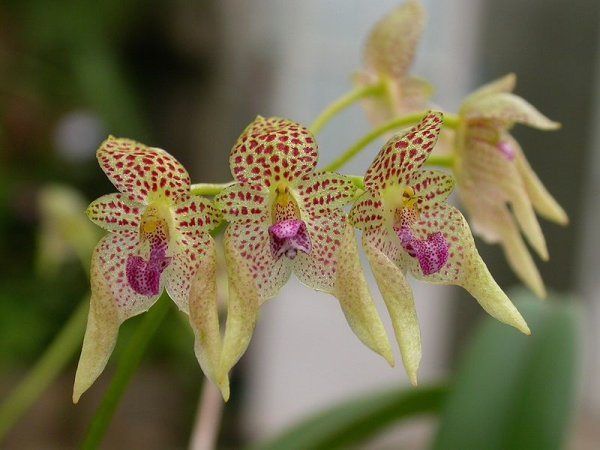
Care for a home orchid during flowering
For artificial lighting, use special lamps, but it is preferable to keep orchids in the sun. The optimum temperature regime for these plants is from +14 to + 170C. Orchids require a large amount of moisture, so make sure that the soil under the flower is always moist.
It is often not necessary to transplant the plant. Before replanting, trim the roots a little and move the flower to a new pot. Sparing conditions after this procedure are necessary. The plant can multiply by children or rhizomes of the bush, or stems.
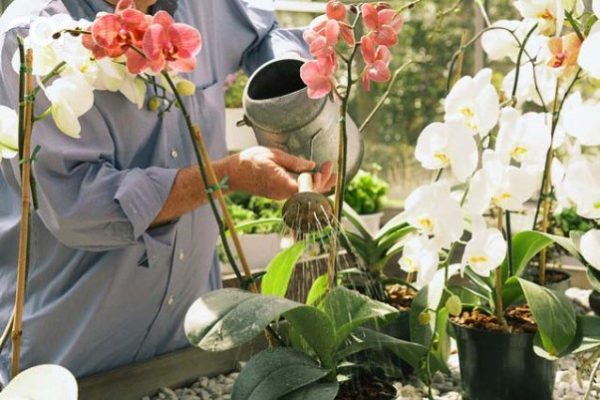
Advantages and disadvantages of orchids
The basic advantages of orchids include the diversity of their species, that is, the buyer will be able to choose the variety that will take root in the conditions of his region, as well as withstand temperature extremes. The disadvantages of orchids include their whimsical consumption of moisture.
How to determine the variety of orchids by flowers
Orchids are usually divided into two groups according to their growth:
- monopodial;
- sympodial.
In the first case, a stem is formed on which flowers grow. Among these, phalaenopsis and vandas are often found. And in the second case, these are more expensive and valuable varieties, since they form several shoots simultaneously growing from the very roots.
Reviews
Most people who tried to grow an orchid were satisfied with it. Some women wrote that the shoots of other flowers had to be literally thrown away, as they died. However, when they tried to plant an orchid, the plant quickly took root and bloomed for a very long time.

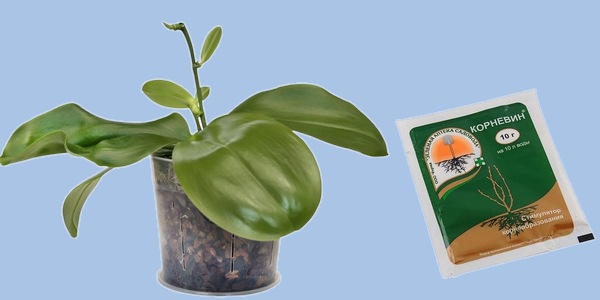
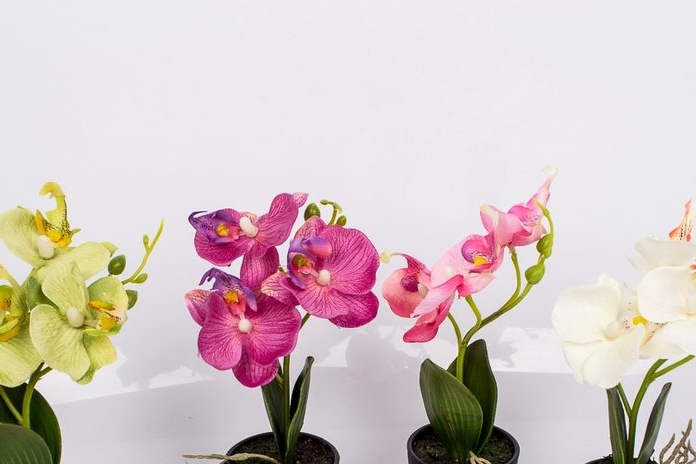
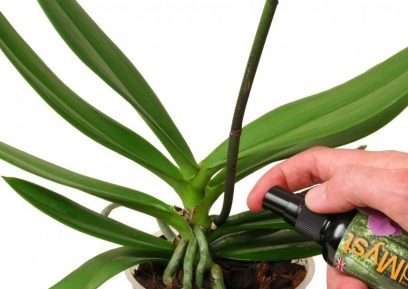
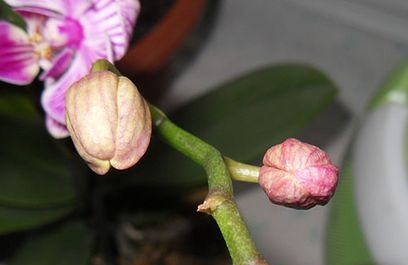 Reasons why orchids fall flowers and what to do
Reasons why orchids fall flowers and what to do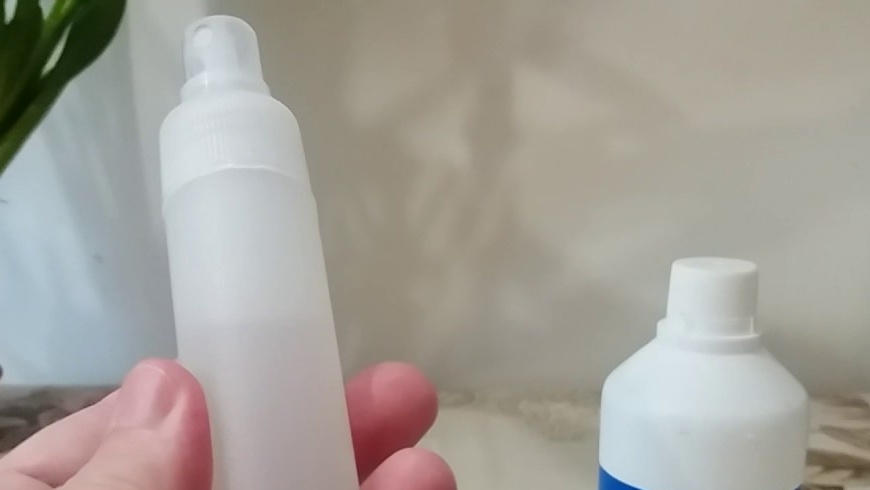 How to use hydrogen peroxide for orchids and why
How to use hydrogen peroxide for orchids and why Midges are wound up in the orchid: effective ways to get rid
Midges are wound up in the orchid: effective ways to get rid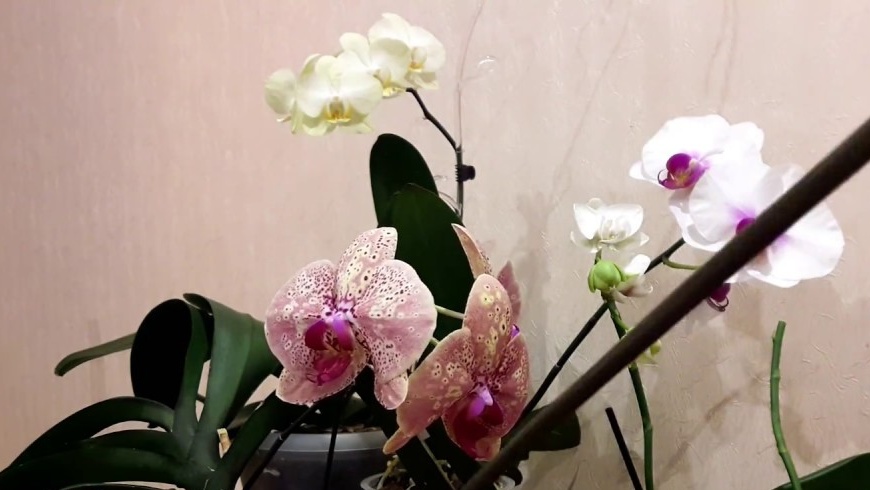 Is it possible to transplant an orchid during flowering
Is it possible to transplant an orchid during flowering